Keeping tires in good shape and free from any cracks and damages is important for ensuring safety while driving and prolonging the lifespan of your tires.
So if you’re researching ways to repair damages and improve the strength of your vehicle’s tires, you may be wondering – what is tire vulcanizing? Well, here is everything I’ve found out on this topic!
Tire vulcanizing is a chemical process that hardens rubber and is frequently used to repair cracks, tears, and punctures in tires. Most local automobile service centers offer tire vulcanization services for $10-$30. However, vehicle owners can also perform the vulcanization process themselves using DIY kits that cost anywhere from $2-$15 per kit.
If you want to learn more about how tire vulcanizing works, how much does it cost to vulcanize tires, and much more, keep on reading to find out more useful facts and tips!
Charles Goodyear invented the vulcanization process in the mid-1880s while doing experiments to improve tire tubes.
Although this process received heavy criticism in the beginning, people eventually came to appreciate the benefits of vulcanization in the manufacturing and repair of tires.
The vulcanization process involves sealing and repairing punctures, cuts, or gashes in tires under extreme pressure and heat.
Vulcanization can be done in three different ways:
1. Section Repair
The section repair method is used to deal with severe damage such as cuts and tears through the cords of the tire.
In this method, both inner and outer layers of the tire are first beveled and filled with rubber patches.
After that, sulfur is applied under high pressure and temperature to permanently seal and harden the patches.
2. Spot Repair
Spot repair can only be used to repair external damage including sidewall tears, cracks, and bead damage, and is not suitable if your tire’s cords are also damaged.
In spot repair, the surface of the damaged area is filed, evened out, and filled with a new rubber patch in the presence of sulfur or another curative under high pressure and temperature.
3. Stripping
Stripping involves adhering a thin layer of rubber to the inner surface and vulcanizing it with sulfur under high pressure and heat to form a permanent seal.
This method is primarily used to repair the inner surface of the tire, where the cords have been exposed due to extended wear and tear.
Vulcanizing fluid is a rubber-based, fast-drying liquid that is used to repair tires and tubes, which works by forming strong chemical bonds (of sulfur) with the tire patch at normal room temperature and pressure.
Afterward, once it has dried after application, the seal between the tire and patch becomes permanent and air-tight.
Here are the steps you should follow to properly apply vulcanizing fluid for your tire repair:
It should be noted that the drying time of the fluid is affected by its temperature and thickness.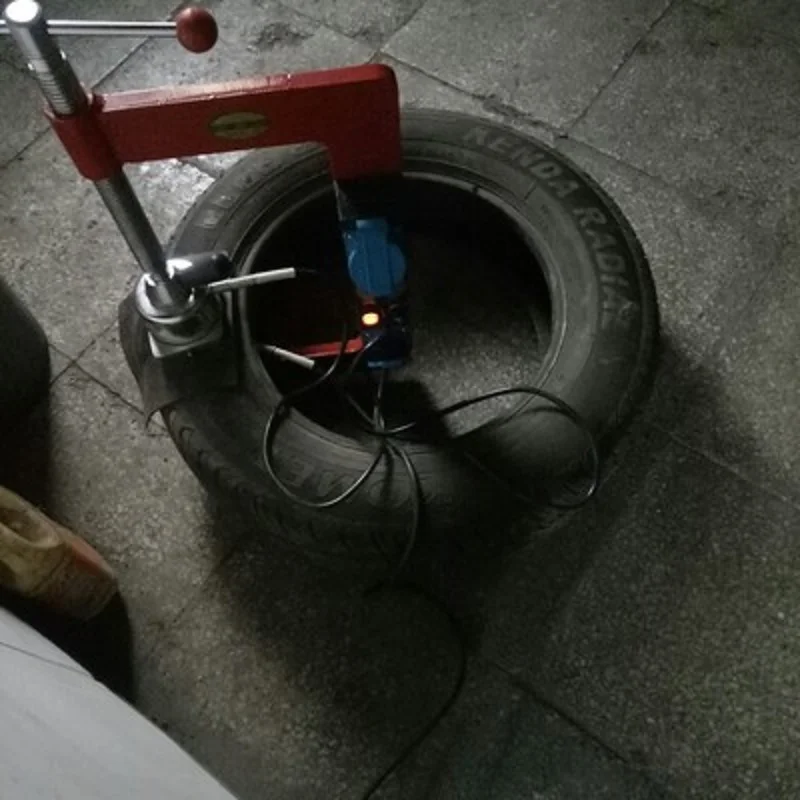 To compare, a thin coating will dry in five minutes, but a heavy coating can take as much as fifteen minutes to dry.
To compare, a thin coating will dry in five minutes, but a heavy coating can take as much as fifteen minutes to dry.
Although you can use both rubber cement and vulcanizing fluid to repair your tire, there is a slight difference in their composition and in how they function.
Rubber cement is made from elastic polymers (latex) and solvents (hexane or acetone), whereas vulcanizing fluid uses sulfur as the main compound for bonding with the tire’s rubber.
Additionally, rubber cement is not strong enough to achieve long-lasting results from vulcanization, whereas vulcanizing fluid makes a permanent and strong seal.
Vulcanizing a tire is an excellent way to repair and strengthen your tire since vulcanized rubber lasts a lot longer than natural rubber.
In fact, vulcanized rubber becomes ten times stronger than natural rubber due to the cross-linking of sulfur and other metallic oxides with the rubber.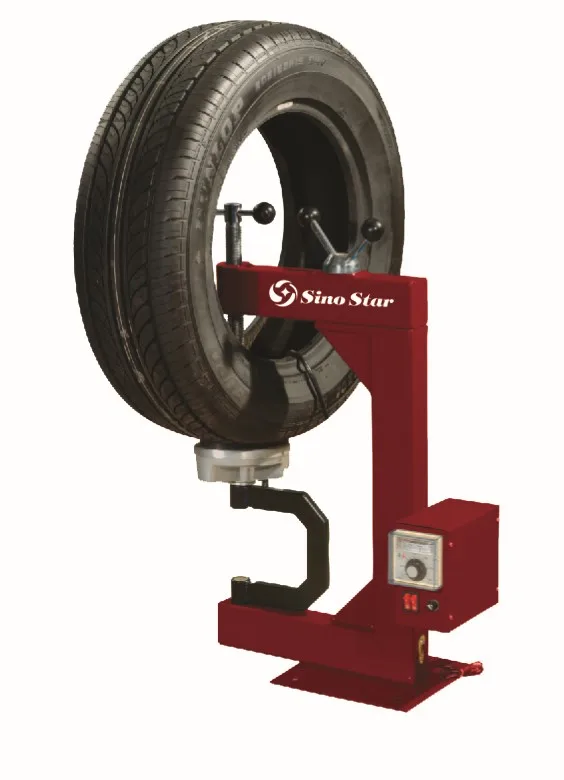
Because of this, manufacturing companies often use vulcanized rubber to produce tires as well, making it quite suitable for tire repairs.
Although it is safe to vulcanize a tire, you should avoid doing so if any of the below conditions apply, since the repair will not be effective or long-lasting:
You should have your tires inspected by a professional mechanic if you are not sure whether it is safe to vulcanize a tire.
You can expect to pay between $10 to $20 for vulcanizing a damaged tire, though the cost also depends on the size of the tire and the extent of the damage.
However, keep in mind that vulcanizing a tire with a sidewall tear usually costs more (up to $30) because the sidewall is integral to the tire’s strength, rigidity, and structure.
You can get your tire vulcanized from any local automobile repair shop, and you can also visit nearby service centers of any of the following automobile chains:
You can vulcanize your tires at home using DIY Vulcanizing Patch Kits, but keep in mind that it is only suitable for very small tears or cuts.
Additionally, the process becomes more complicated if the tires are heavy-duty or commercial, or if you have no prior experience with tire repairs.
You will find the following items in most DIY Vulcanizing Patch Kits:
If you’d like to purchase a vulcanizing patch kit, you can do so from stores like Amazon, Walmart, or even your local Auto Parts store for around $2-$15 per kit.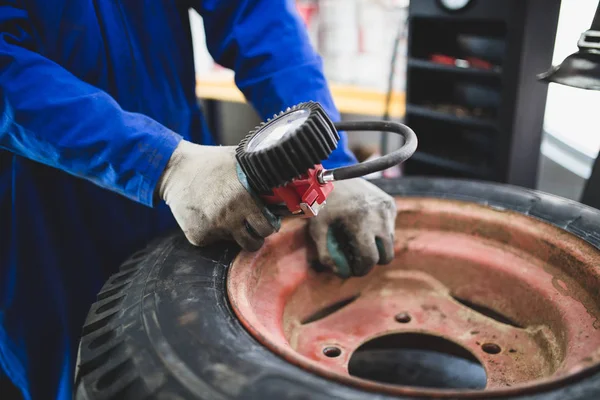
If you want to learn more, you can also check our posts on what are XL tires, what are all-season tires, and what are highway tires.
Tire vulcanizing is a chemical process used to repair cracks, tears, and punctures in tires to prolong the life of your tires.
Tire vulcanizing is a highly effective method for repairing tires, and vulcanized rubber is even used by manufacturers to produce durable and long-lasting tires for rough usage.
It’s never a good day when a tractor or combine tire goes down. Maybe a sharp piece of metal has speared it and left you completely flat. Or, maybe you’ve discovered a chipped lug, bead damage—or you’re staring at your tire’s cords through a nasty gash. If you find yourself in this situation, there’s actually good news: the tire may be repairable.
How Vulcanized Repairs Can Save You MoneyA damaged bank account is the first thing most farmers think about when they spot a damaged tire.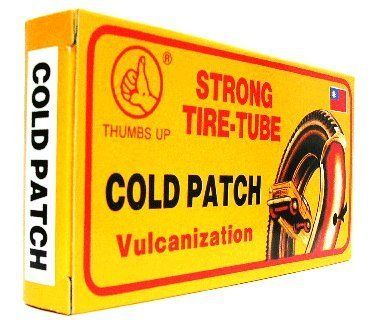 Or how the search for a decent used tire is going to waste time you don’t have. Don’t worry: NTS Tire Supply can help you with both these problems.
Or how the search for a decent used tire is going to waste time you don’t have. Don’t worry: NTS Tire Supply can help you with both these problems.
In reality, your damaged tire may still be good thanks to vulcanizing technology. Vulcanizing repairs can save your operation hundreds or thousands of dollars in tire replacement costs.
If for some reason a vulcanized repair isn’t a good fit for your tire (we cover the reasons below), we have a pretty good idea where you can find a quality used tire from a reputable seller. But first, let’s take a look at the 3 types of vulcanized repairs.
These repairs involve the most severe type of tire damage—cuts through the tire’s cords. Section repairs include sidewall, tread face, and shoulder reinforcement. To perform this repair, our vulcanizer grounds or bevels out the damaged area. The inside of the cut is then layered with new ply. Next, the cavity is filled with new rubber from the outside.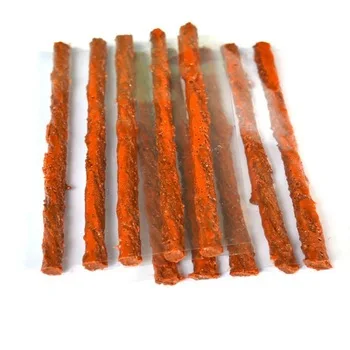 Then, a high-pressure heat cure forces the rubber tightly into the cavity to complete the repair. Our success rate for section repairs is about 95%.
Then, a high-pressure heat cure forces the rubber tightly into the cavity to complete the repair. Our success rate for section repairs is about 95%.
Spot repairs address external tire damage that does not involve the tire’s cords. Examples include sidewall cuts, chipped lugs, shoulder cracks, and bead damage. During a spot repair, our vulcanizer grounds or bevels out the damaged area and fills the outside of the cavity with new rubber. A high-pressure heat cure then forces the rubber into the casing and repairs the tire.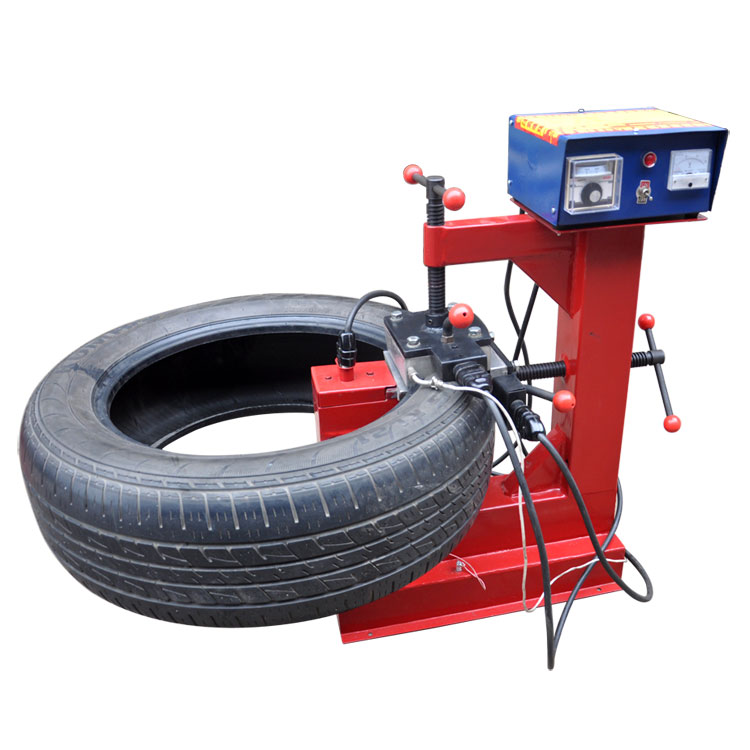 Our success rate for spot repairs is over 99%.
Our success rate for spot repairs is over 99%.
We recommend using Orange Armor tire sealant to completely guard against future leaks.
3. StrippingUnder the demands of agricultural use, the inner lining of a tire can thin to the point where the cords become exposed. During the stripping process, our vulcanizer applies a layer of new rubber to the inside of the tire, then bonds the new rubber to the casing with a high-pressure heat cure. Our success rate for stripping repairs is nearly 100%.
You should choose your tire repair person the same way you would choose a mechanic—go with who you trust based on the company’s experience and reputation.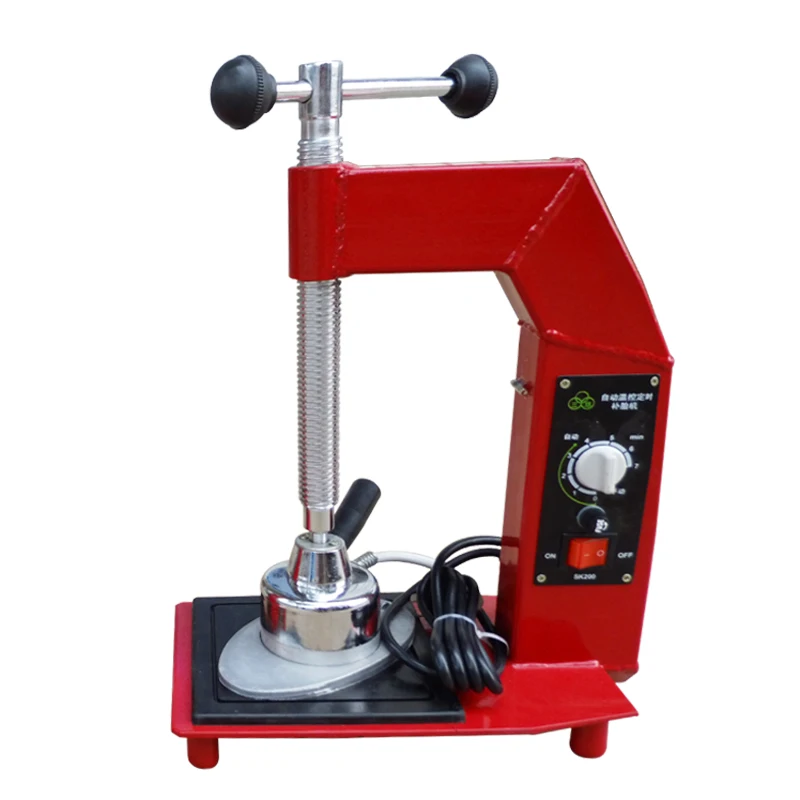 We’re fortunate to have Gary, our vulcanizer, who performs hundreds of tire repairs each year.
We’re fortunate to have Gary, our vulcanizer, who performs hundreds of tire repairs each year.
If you have a damaged tire, your first step is to contact us to see if we can fix your tire. Even though we can repair some of the nastiest-looking gashes, not every tire is repairable. A tire is unrepairable if:
Once you contact us about your repair, we’ll let you know what the next steps are. For example, we might need some pictures of the tire to determine if a fix is possible.
If we determine that vulcanizing can’t save your tire, your next step is a used tire. NTS Tire Supply has thousands of used tires in stock at any given time, so check if we can source a suitable used replacement before you look at a new one. We have everything from like-new tires with factory blemishes (that don’t affect performance) down to low-tread tires that you could mount for one more season before you invest in a whole new set.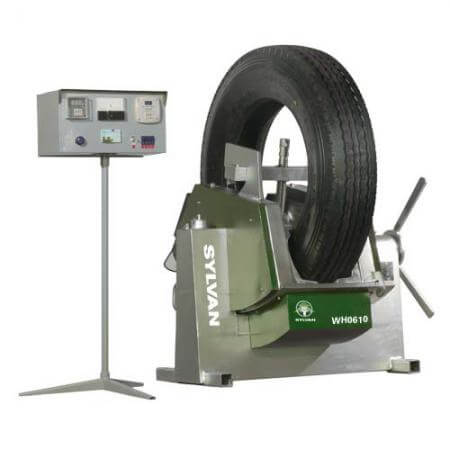
Every used tire we sell undergoes a complete inspection, inside and out. We look for anything that could impact the performance of the tire—weathering, casing issues, odd tread wear, etc. Can you say the same for a tire you might find on Craigslist or another online retailer?
Every tire we sell (or repair) is covered by our Black Gold Warranty. Bringing in a tire for a vulcanized repair? You’re covered. NTS Tire Supply stands behind every repair job with a full 2-year warranty. In the rare case that a repair fails, we’ll redo the job free of charge or refund the full cost of the repair.
We also stand behind every tire (or track) we sell: a practice that has attracted loyal customers since the 1980s, when we first started selling used tires. If a product fails within the first 30 days after installation or 6 months after purchase (whichever comes first), NTS Tire Supply will offer free replacement, repair, or the full purchase price back including labor.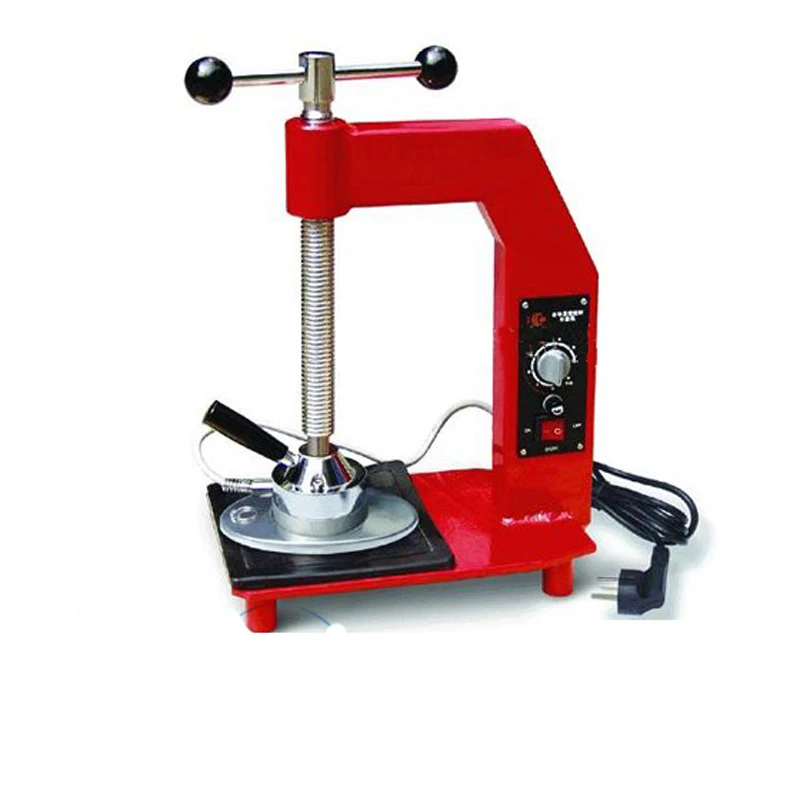
Read More: NTS Tire Supply covers every used tire we sell with our Black Gold Warranty.
Have a damaged tire? Contact us today and we’ll discuss your repair options. And if you need a used tire or want to upgrade the performance of a machine on your farm with a set of new rubber, our tire experts will work to find the best options for your operation. We’re here to help drive your farm forward.
NTS Tire Supply Team
Repair
This method is mainly used to repair tire side cuts or to repair serious damage to the tread of a truck tire. Any motorist or professional driver knows the moments when, during a collision with a sharp object, a curb or a pothole at high speed, mechanical damage to the tire structure occurs.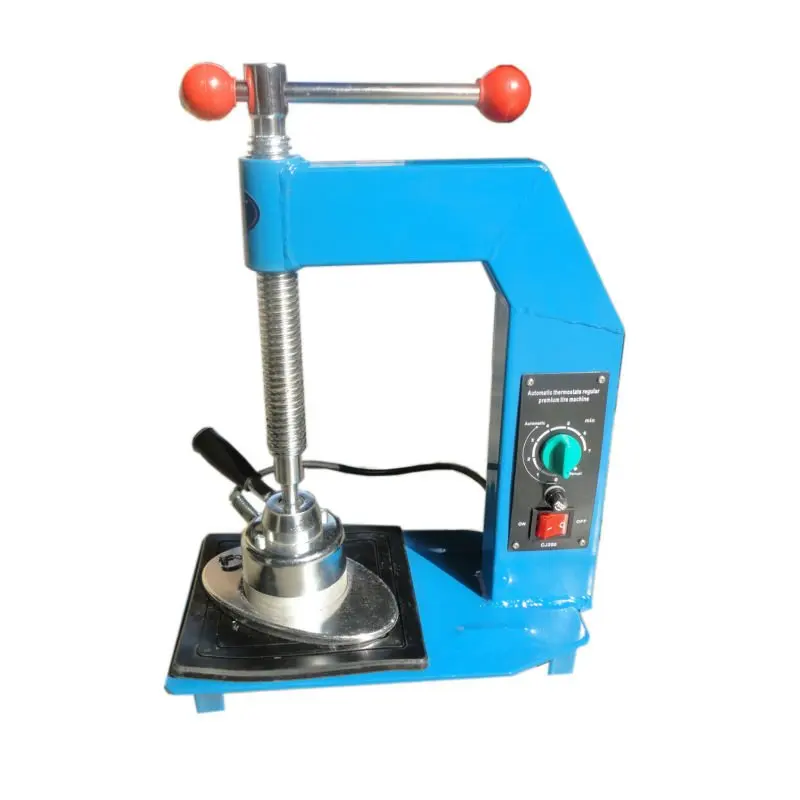 It can be a tear, a side cut, a tread cut or a hernia, as drivers call it. If this happens to you, do not rush to get rid of damaged tires. The company is ready to help you restore your tires to working condition using hot vulcanization. What is this process? To bond damaged rubber material, high temperature is used. To do this, you must pre-process the fastened part. After that, a plastic mixture is used, which is applied to damaged areas. Hot vulcanization is carried out using an electric vulcanizing press. When heated to + 200 ° degrees, the adhesion of the masses into one whole occurs. The duration of the vulcanization process depends on two factors: the temperature regime and the thickness of the surfaces to be joined. After connection, cooling is a prerequisite. The most reliable and effective way to repair tires is hot vulcanization, since this achieves the strongest joint formed, which prolongs the performance of the tires.0005
It can be a tear, a side cut, a tread cut or a hernia, as drivers call it. If this happens to you, do not rush to get rid of damaged tires. The company is ready to help you restore your tires to working condition using hot vulcanization. What is this process? To bond damaged rubber material, high temperature is used. To do this, you must pre-process the fastened part. After that, a plastic mixture is used, which is applied to damaged areas. Hot vulcanization is carried out using an electric vulcanizing press. When heated to + 200 ° degrees, the adhesion of the masses into one whole occurs. The duration of the vulcanization process depends on two factors: the temperature regime and the thickness of the surfaces to be joined. After connection, cooling is a prerequisite. The most reliable and effective way to repair tires is hot vulcanization, since this achieves the strongest joint formed, which prolongs the performance of the tires.0005
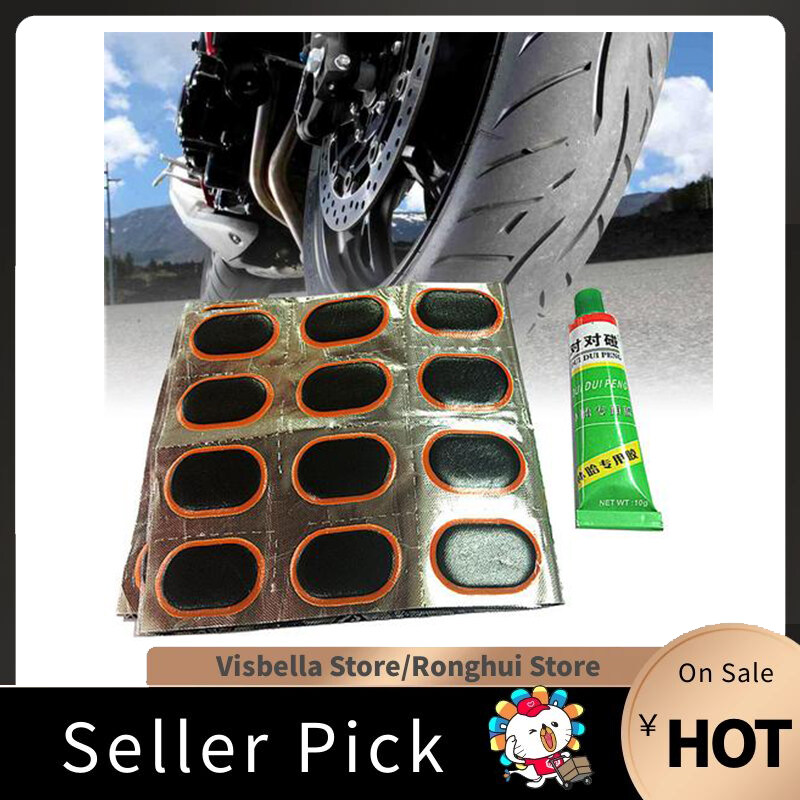 Many neglect this item due to the lack of the possibility of washing the wheels, or due to negligence. You should not do this, because. this is the foundation stone for this procedure.
Many neglect this item due to the lack of the possibility of washing the wheels, or due to negligence. You should not do this, because. this is the foundation stone for this procedure. 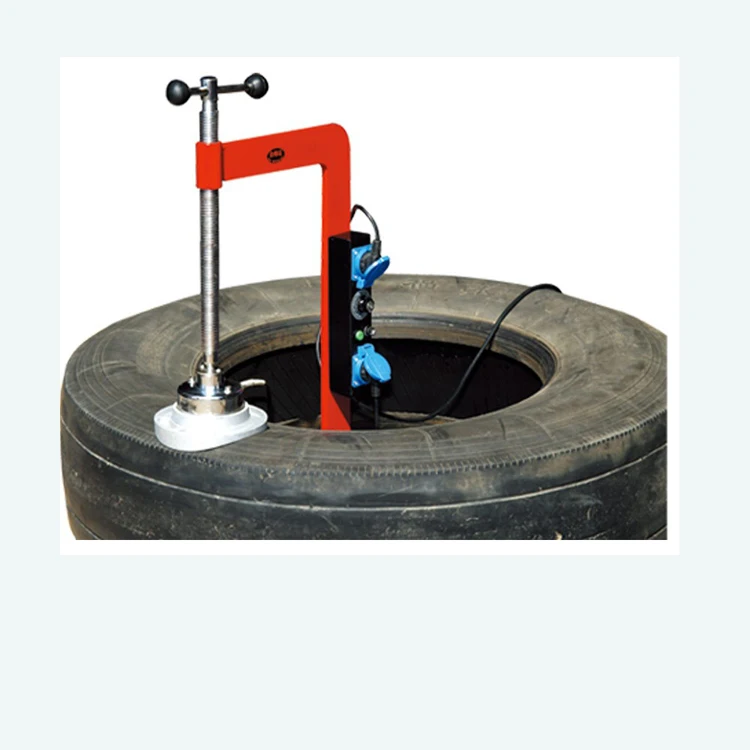 After roughening, the tire must be vacuumed to remove crumb rubber.
After roughening, the tire must be vacuumed to remove crumb rubber. 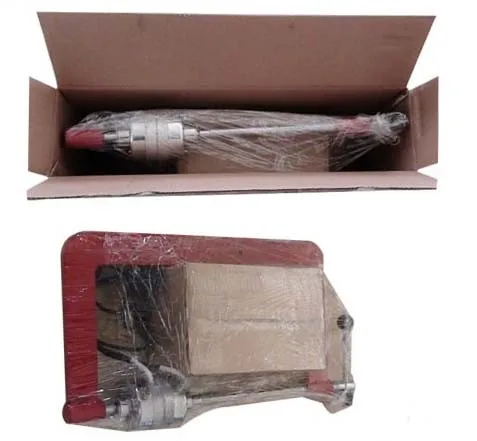 It should cool naturally. Only then will you get the highest quality of the work done.
It should cool naturally. Only then will you get the highest quality of the work done. As you can see, in our tire center we do everything right and according to technology. Not many tire shops offer a guarantee on their work. We give a guarantee for any repairs performed by our masters.
If everything is done according to technology, according to all the rules, then the connection is strong and reliable. However, there are also drawbacks to this method. Deficiencies can result in delamination of patches, bulging or serious damage to the tire. Therefore, before starting tire repair, it is necessary to assess the complexity of the damage and the location. It is better to immediately turn to real masters than to throw away the exfoliated tire later.
Hot vulcanizing is not only used for repairing tire side cuts.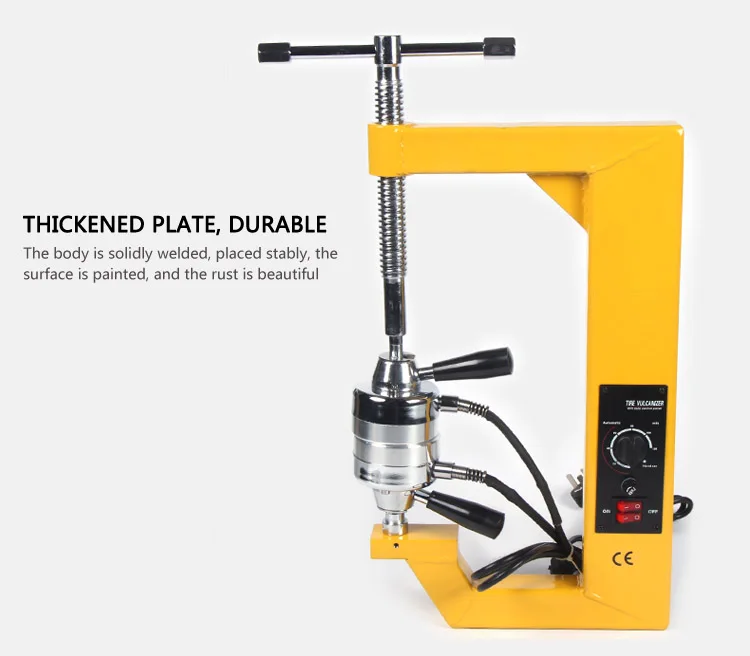 This is the most optimal way for enterprises that have conveyor belts in stock. The hot vulcanization process itself is as close as possible to the conveyor belt manufacturing technology and the strength of the joint during this process practically corresponds to the strength of the belt.
This is the most optimal way for enterprises that have conveyor belts in stock. The hot vulcanization process itself is as close as possible to the conveyor belt manufacturing technology and the strength of the joint during this process practically corresponds to the strength of the belt.
The price is highly dependent on the size of the lateral cut or hernia. In our tire workshop, the price for this service starts from 1200 rubles (hot vulcanization itself). In addition to it, you must pay for the installation of the patch. Prices for the installation of patches and patches can be found here.
Many people ask the question: “What should I do if a hernia appears on the wheel? Can you drive with a herniated tire? Why is this hernia dangerous? The best answer is to turn to the hot vulcanization method and remove the hernia from the tire. But let's go in order.
1. What causes a hernia on a wheel?
Hernia occurs in two cases. First: when the layers of rubber are delaminated, and air enters between the layers. From this case, you can easily insure yourself by buying high-quality rubber. Manufacturers of cheap rubber save on everything they can, so it's not surprising that the layers of this rubber delaminate. It happens the same way when a tire hits a bump or edge of a pit. The second case is when a cord breaks inside the tire. Such a hernia also appears from hitting a bump, the edge of a pit, or something similar. At the moment of impact, the cord inside the tire bursts, and the rubber stretches. After that, the cord no longer holds back the stretched rubber and it is not able to independently maintain pressure inside the tire. The rubber begins to swell, and, as a result, we see this swelling on the tire, which is called a hernia in the common people.
2. Can I drive with a herniated tire?
Of course not. The fact is that a hernia can burst at any time. Even if the wheel is just standing still, the pressure inside the tire is constantly acting on the hernia of the wheel and gradually inflates it. If you are moving at speed, then any pits and impacts on the wheel lead to sharp compressions, and this increases the pressure. You are in danger of flying into a ditch or into oncoming traffic if a wheel bursts. If you have a spare tire, it is better to put it on right away, and take the swollen wheel for repair. If there is no spare tire, drive at a minimum speed to the nearest tire shop, where there is a hot curing unit.
Even if the wheel is just standing still, the pressure inside the tire is constantly acting on the hernia of the wheel and gradually inflates it. If you are moving at speed, then any pits and impacts on the wheel lead to sharp compressions, and this increases the pressure. You are in danger of flying into a ditch or into oncoming traffic if a wheel bursts. If you have a spare tire, it is better to put it on right away, and take the swollen wheel for repair. If there is no spare tire, drive at a minimum speed to the nearest tire shop, where there is a hot curing unit.
3. Can a hernia be removed from a tire?
Of course you can. For this, there is a method of hot vulcanization. The process of hernia removal is identical to the repair of side cuts. First, the hernia is cut out with a margin of several centimeters. It must be cut to an intact cord and not stretched rubber without delamination. This is followed by all the same points as when repairing side cuts: the same thorough cleaning, roughening, processing and cleaning, choosing a patch and attaching it from the inside of the tire, applying a layer of raw rubber on top, and the process itself on the machine. In general, with the correct observance of all the technique of the process, the removal of hernias is not only possible, but also carried out with the guarantee that a hernia will not occur again. In our tire service, we do all the work with high quality and give a guarantee for all types of repairs, both side cuts and hernia repair.
The most durable docking and recovery method.
Service life after refurbishment is directly related to working conditions.
After restoration, the product has almost the same service life as before repair.
The butt joint is very flexible and close to the original in flexibility.
Hot vulcanization of materials is possible at any time of the year, even at negative temperatures, which is very typical for our regions.
Using hot technology, a uniform product thickness can be achieved.
Possibility to work in conditions of increased pollution.
Low cost compared to cold vulcanization.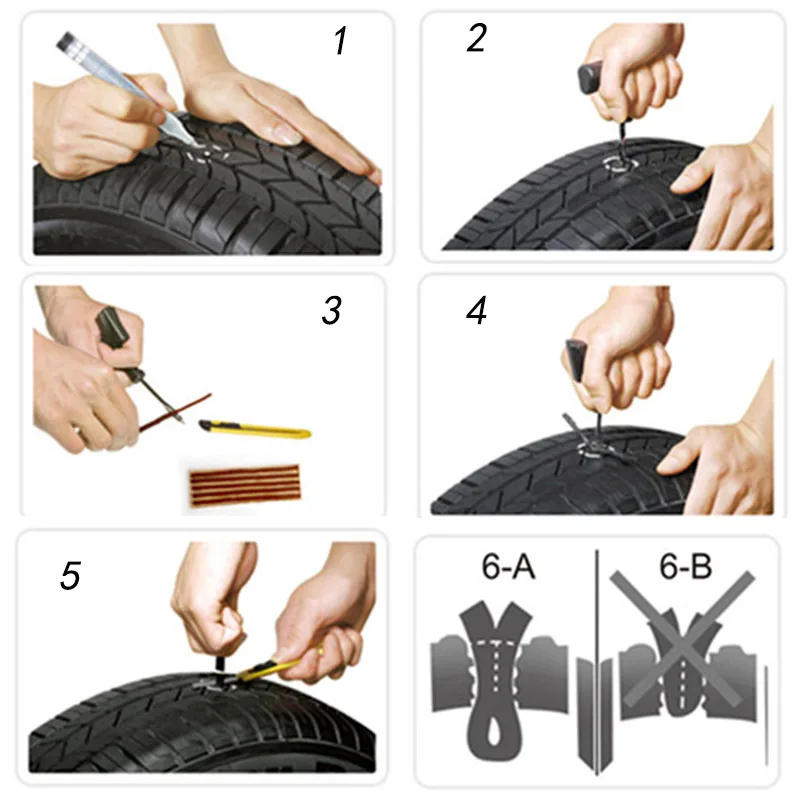
Use of expensive, bulky and heavy specialized equipment.
Working on such a press requires certain skills and a high degree of qualification of the operating personnel.
Availability of an industrial network from 220 V to 380 V.
You can order a hot vulcanization service by contacting our company. Experienced craftsmen are ready to provide prompt assistance in retreading truck tires using hot working methods, repair side cuts, and repair the edges of the conveyor belt directly at your enterprise. By ordering a hot vulcanization service on site, you save your money. You will not have to stop production for a long time and buy a new conveyor belt. We will restore the old tape, as soon as possible. This means that you will keep your clientele and will not suffer a big loss. Trust the professionals! Highly qualified specialists have been working in this direction for many years and are familiar with all the difficulties that arise. Therefore, the price you pay for hot working will more than pay off with the reliability and durability of the conveyor belt. High quality performance on modern equipment, low price for services and prompt execution is the key to the success of your company and easy movement on the roads.
Therefore, the price you pay for hot working will more than pay off with the reliability and durability of the conveyor belt. High quality performance on modern equipment, low price for services and prompt execution is the key to the success of your company and easy movement on the roads.
The number of workshops specializing in tire fitting is growing every day. But on the way, both a motorist and other vehicles can have a very unpleasant situation: a wheel has broken through, and the nearest car service is far away. And if the car often has a "spare wheel", then what should a cyclist or a motorcyclist do? So there is a need to repair the camera or the wheel itself right on the road.
When we use this term, we are talking about a very complex and somewhat unique process.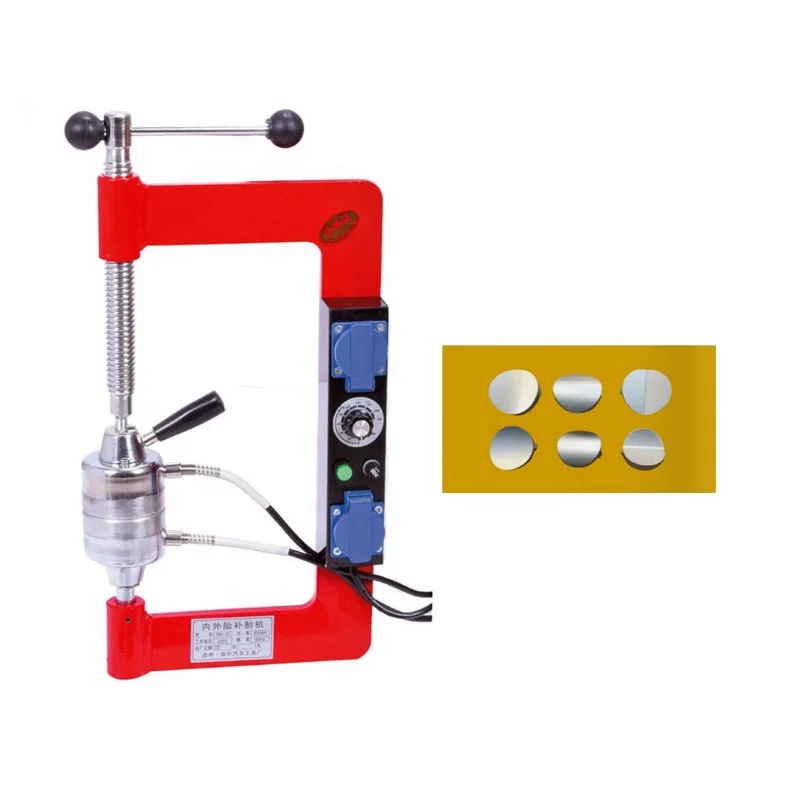 During this action, the crude rubber is transformed into rubber. This leads to a significant improvement in the quality of the material. Rubber is used here in order to eliminate the punctures formed in the chambers. There are different variants (methods) of vulcanization.
During this action, the crude rubber is transformed into rubber. This leads to a significant improvement in the quality of the material. Rubber is used here in order to eliminate the punctures formed in the chambers. There are different variants (methods) of vulcanization.
There are two main types of vulcanization - hot and cold. Electric vulcanization refers to hot. What can be used as a heater? An electric stove is often used, but a hair dryer and an iron may well be suitable. For this method, the optimum temperature is 145 degrees Celsius. To determine whether the temperature is appropriate, other means at hand are quite suitable. You can even take a sheet of paper. If it begins to char, the temperature is already quite suitable.
You can also think of special clamps with heating elements. They work from a regular 220 volt outlet. You can use a car battery or your own battery. Such auxiliary elements are simple and easy to use. To do this, a rubber patch is applied to the camera, clamped and then plugged into the network.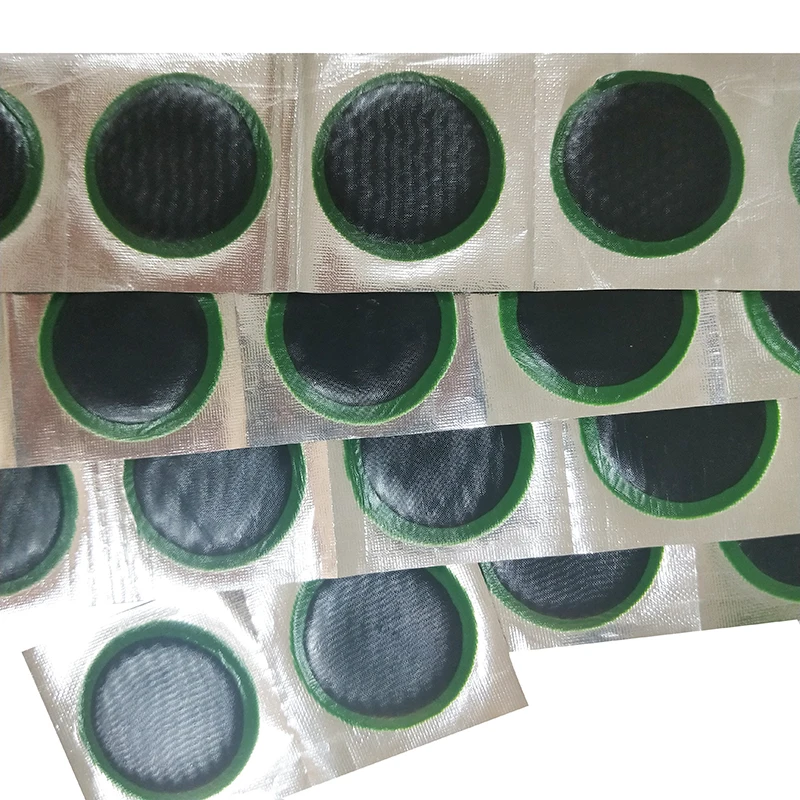
In this operation, a chemical reaction takes place in the tire, during which the sulfur atoms are attached to the rubber. By adding up to 5 percent, you can get excellent raw materials from which cameras and tires are made. When gluing sulfur and rubber, a so-called bridge is formed. A similar procedure refers to the hot method. However, it is extremely difficult to do this during a trip on the highway or on a hike.
As a raw material, rubber has an interesting property: it turns into a single mass at a certain sufficiently high temperature. As a result, the rubber will become rubber and its return to its previous state is absolutely impossible. This ability of rubber allows you to cope with both punctures and cuts.
Hot tire repair is only possible with a press. Welding time is proportional to the depth and area of the cut. So, it will take about 4 minutes to restore one millimeter of a cut.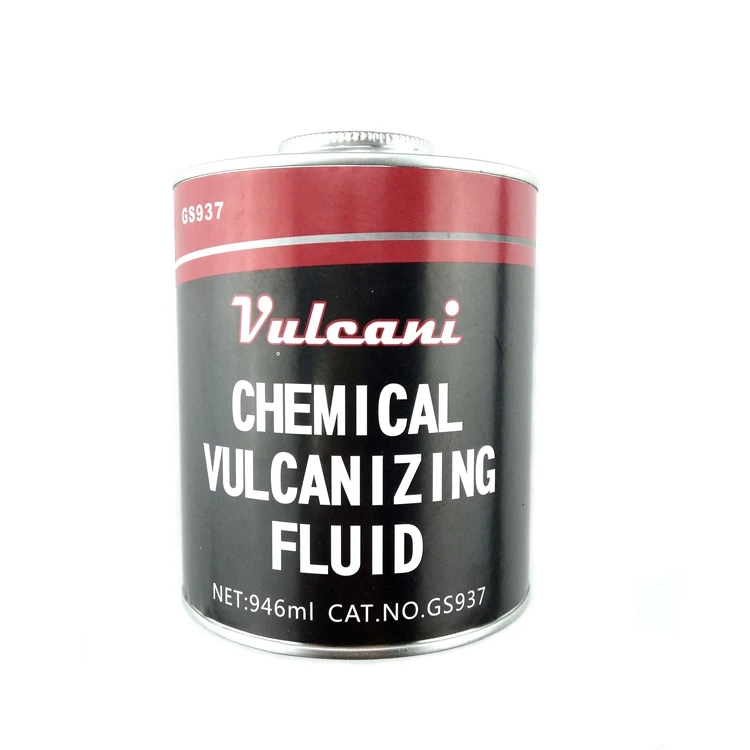 The equipment must be properly warmed up and adjusted.
The equipment must be properly warmed up and adjusted.
When performing hot vulcanization, it is important to control the temperature. It should stay around 150 degrees Celsius. If the temperature is higher, the rubber will simply deteriorate and lose all its properties.
Now it is not difficult to use this method, because you can buy a kit that allows you to carry out repairs at any point of sale of automotive goods.
Repair is done in a way reminiscent of hot. It is also necessary to treat the surface with abrasive material, remove dust and degrease. Once dry, attach the patch using the included adhesive specially designed for this purpose.
This process is simple, you can do it yourself anywhere. But raw rubber cannot be made at home. It is necessary to go to a place where there is special equipment for the corresponding manipulations.
The main advantage of this process is the fact that the repair will cost much less than buying a new one.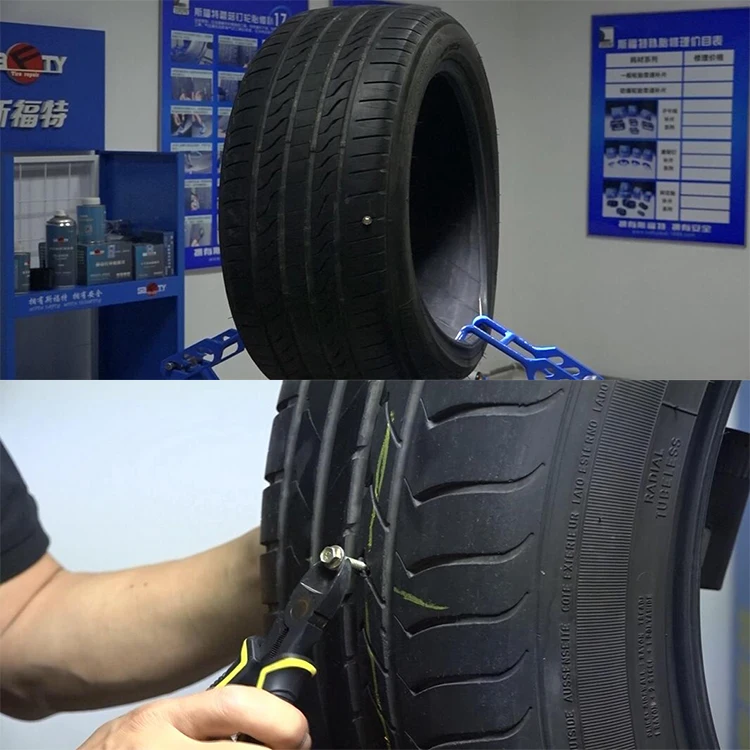 But each situation must be considered individually, and, based on all the circumstances, to determine whether it makes sense to repair.
But each situation must be considered individually, and, based on all the circumstances, to determine whether it makes sense to repair.
The cold method is affordable and takes little time at a minimum cost. But its main disadvantage is the low degree of reliability of gluing car tires . This procedure is temporary, it is better to immediately contact the service station.
Tire repair by the "hot" method is carried out at specialized stations. With its help, rubber is reliably welded, and the price of such work is quite low.
What conclusion can be drawn from this? Vulcanization improves the quality and service life of the tire, it can be carried out by various methods, but it is still better to entrust this work to professionals, since in this case we are talking about safety.
| What winter tires to buy? Expensive or cheap? To begin with, it is worth knowing the division into classes of car tires. 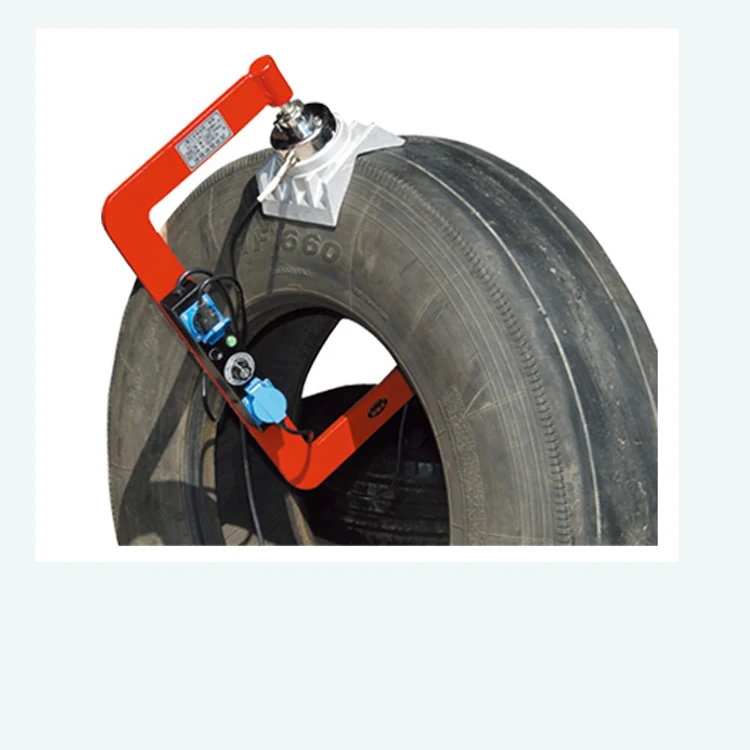 It is useful to know when to buy expensive premium tires, and when to choose cheaper analogues from the economy segment... It is useful to know when to buy expensive premium tires, and when to choose cheaper analogues from the economy segment... September 06, 2022, 10:06 | |
| Tires for electric vehicles - which ones to choose? Driving an electric car is different from driving a car with an internal combustion engine. This is felt by both the driver and passengers. For tires, another type of drive is also important. Rubber on.. 09 August 2022, 11:58 | |
| Who are low profile tires suitable for? Car wheels are the first thing that comes to mind in the context of visual tuning. Not every car will be better after installing a tailgate spoiler. And big.. April 18, 2022, 15:42 | |
| What are UHP (HP) tires? Best choice for summer High Performance and Ultra High Performance tires are becoming increasingly popular all over the world. 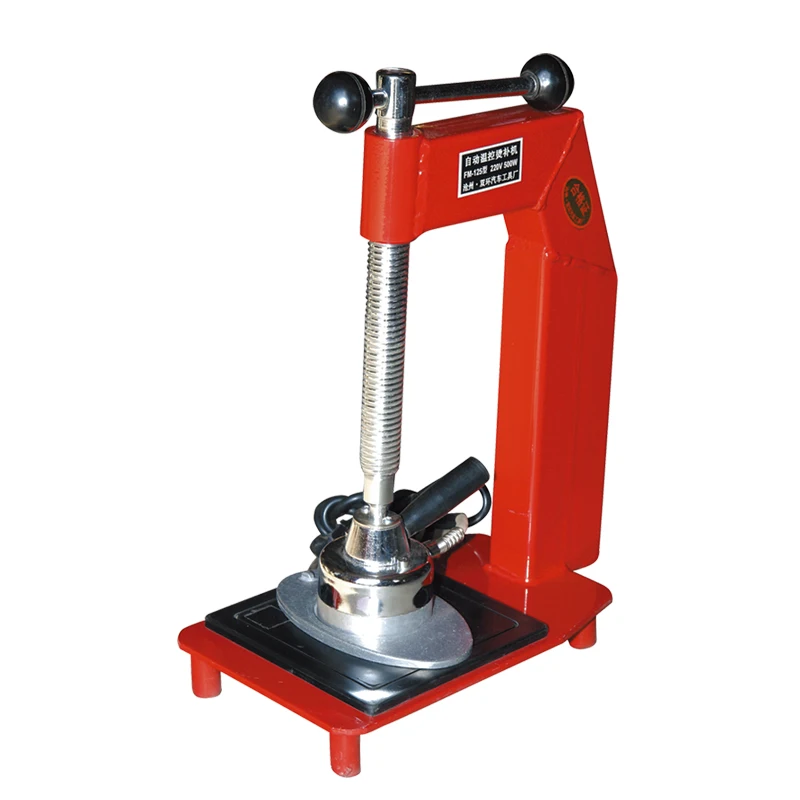 | |